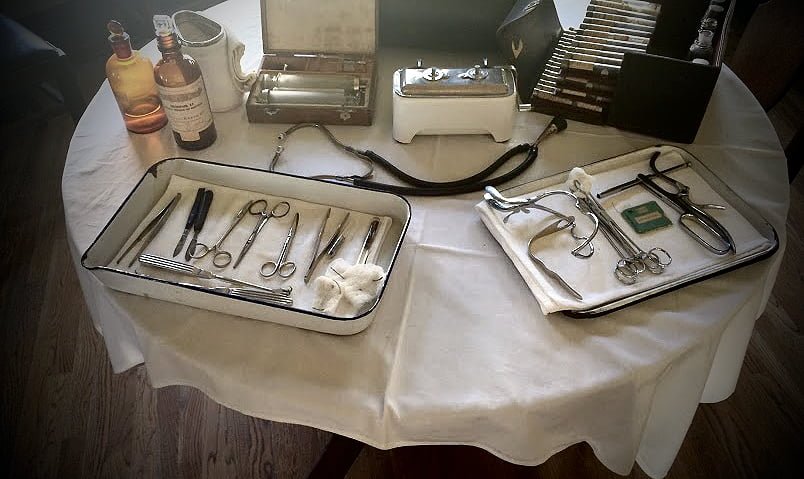I may be biased, but I’m a huge fan of historical reenactment villages. I love watching men in soldier’s uniforms and women in old-fashioned dresses swan around pretending to be from the past. Perhaps if you’ve been to one, you’ve seen a blacksmith demonstrating how to make a horseshoe, or an aproned housewife preparing unevenly-cooked bread in a wood stove. With the aim of “making history come to life,” historical villages can be a delightful summer activity, but they also offer unique scholarly opportunities.
For three years, I was one of those women swanning around in old-fashioned dresses. I worked at Heritage Park Historical Village in Calgary, Alberta (subtitle: “How the West was Once”), a reconstruction of western Canadian village life in the 1910-1914 period. As a female “exhibit interpreter,” I was required to wear my hat at all times when outside (and never inside, except in the church), avoid holding hands with men in public (linking elbows was appropriate, of course), and refrain from wearing lipstick or earrings (except very small gold or crystal studs).
I worked primarily in the Cottage Hospital, a reconstruction of an isolated, nurse-run rural hospital with equipment from circa 1912 (and a few anachronistic post-war pieces). I entered the Cottage Hospital with no formal training in contemporary medicine, and only a ten-minute lecture from an experienced interpreter on how she recommended telling guests about the hospital. Upon my arrival on my first day, however, a coworker in elaborate white nurse’s garb promptly declared me a young lady doctor, gave me a crash course in the use of early-twentieth-century tonsillectomy equipment, and directed me towards a home remedy book called The People’s Home Library that interspersed remedies for various ills (if someone is choking, shake them upside-down by their ankles) with nuggets of medical wisdom (“all bleeding stops eventually”) before leaving me to pass this knowledge on to our guests.
As an interpreter, I had two goals: to educate guests at Heritage Park about life (as a lady doctor) in the 1910’s, and to keep myself entertained all summer. It was the quest for entertainment that led me on a stereotype-busting mission — after all, there’s nothing like being asked the same question seventeen times in an hour to make one question one’s received knowledge. I recognised quickly that I was answering people’s questions in ways that I didn’t feel entirely confident about, and though it was rare for a guest to even so much as ask me a challenging follow-up question, I certainly didn’t want to be disseminating inaccurate information!
Some of the questions that I had were easily answerable, with facts that could be learned from trade history books, or a quick Google search. If I was a lady doctor in 1910, how unusual would I be? Answer: odd, but not unheard of — the first female doctor in Canada was licensed in 1875.
Far more often, questions that I could never have thought of by myself came up in the vast stream of individuals who walked through the hospital, each with their own unique concerns and experiences. I was asked how to cure headaches (peppermint), sunburn (uncooked potato), or haemorrhoids (an ointment of tar and lard). I was asked if we stuck leeches on our patients (of course not, and we only bled them to relieve high blood pressure — we had a real thick needle for it, though!), and if we sterilised our equipment (yes, in a pan of boiling water on the stove).
Most of what I learned came from consulting the wide array of primary sources that had ended up in the Cottage Hospital exhibit. Medical textbooks were, of course, a gold mine — how else would I have known to recommend a turpentine enema for a case of hiccups? But the material objects that surrounded me — which are, of course, the basis of a historical village — also proved to be useful. Reading the labels from a pillbox full of patent medicine showed a combination of herbal remedies (peppermint and cannabis) with hard drugs (arsenic, cocaine, and opium — available in liquid, solid, and chocolate-coated forms). It only took one nasty accident with a pair of salad-fork-like surgical retractors to know that they were sharp enough to pierce skin, not blunt like I had first imagined. My own background in literature predisposed me to focus on books, but it was the tools and objects that guests asked about, and that I needed to know how to use.
Some answers for my guests’ questions also came out of historical imagination. How would a small town in western Canada react to a woman practising medicine, they asked? How did I get my job? Well, doctors were in short supply, and one doctor usually served several towns, travelling between them on horseback — the townsfolk wouldn’t be in much of a position to complain. If they didn’t like me, they were welcome to purchase their own copy of the People’s Home Library and practice medicine at home, without ever consulting a doctor — as many did.
This practice of stepping into a historical role, and the unique sense of immersion that results from teaching the same details over and over, sometimes literally hundreds of times per day, sets the scene for interdisciplinary thinking. It mobilises powers of both observation and imagination to make connections outside of one specific type of resource, and because of the practical and extemporaneous nature of the questions and interactions with guests, historical interpretation also broke down the boundaries of traditional academic disciplines.
Of course, my interactions with guests could not be said to be a full and complete piece of historical scholarship. It was, by nature, speculative. Who knows what real 1910 Canadians would have done if a young female doctor bounced into their town with a box full of opium pills and started offering to dole out tonsillectomies and turpentine enemas? Unlike my coworkers, they would not have been contractually obligated to put up with me, and unlike the Heritage Park guests, they wouldn’t get to go home at the end of the day to bottles of ibuprofen and hand sanitizer. Maybe they would have been suspicious and conservative. Or maybe they would have been delighted to have a trained doctor who spoke with confidence about the latest medical developments from the big city. The point is not that historical interpretation can offer a perfect window into historical experience, or even necessarily a better window than more traditional forms of scholarship. What it can offer is a different window.
Naturally, not everyone can gain this kind of perspective by actually getting a job working as a historic interpreter — especially if one’s field of study happens to be anything other than a historical period that’s popular with tourists. However, anyone whose research involves people can learn to think like a historic interpreter.
Historical interpretive thinking is practical. It’s about how things work in the real world, not on paper or in the realm of pure theory. It integrates considerations like space, working hours in a day, technology failure, even inclement weather patterns into the fabric of human behaviour. It’s also interactive — all about how humans relate to each other, and the infinite variety of ways in which those interactions can play out. We all know that not everyone we interact with on a daily basis thinks in the same way. Yet sometimes it’s hard to extend that knowledge to other groups of people, ones with whom we don’t or cannot interact, like western Canadian villagers from 1910. Interactions between people are affected by thousands of outside influences, and the “human factors” of personality, patience, or personal values should not be assumed to be consistent to all people in a given place at a given time.
Most importantly, historical interpretive thinking serves as a reminder that neither different circumstances nor different times erect barriers in understanding so high that communication is impossible, if practical and interactional circumstances are accounted for. It’s a game of “what would you do in her shoes?” that has, as its very basis, a practice of radical empathy. And radical empathy is important not only for scholars who seek to transcend the limits of their discipline, but also for all residents of a polarised world permeated by a fear that understanding why someone thinks in a certain way will lead you to think like them. Historical interpretation shows that this is not the case. It is possible — healthy, indeed — to learn to think like someone without starting to act like them. Trust me: I have not integrated chocolate-coated opium pills into my medical cabinet just because I now understand why people in 1910 took them.
The 1913 edition of the People’s Home Library, referred to frequently in this text, was an artefact at Heritage Park’s Cottage Hospital. It has, fortunately, also been digitized by the Cornell University Library, and can be consulted online at https://archive.org/details/cu31924085804601

